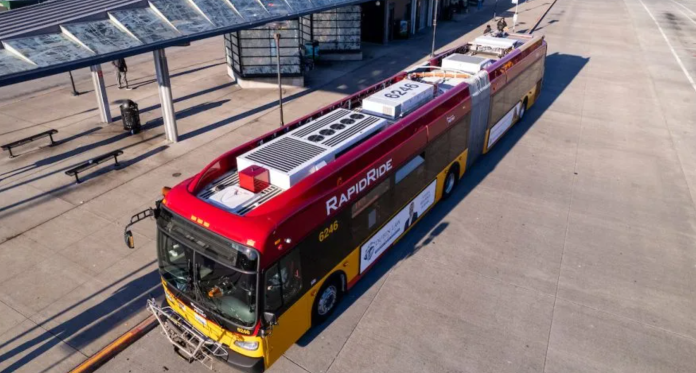
This weekend King County Metro starts service on the RapidRide H line, running between Downtown Seattle and Burien. The seventh RapidRide line and the first launched since the RapidRide F in 2014, the H Line will provide a significant reliability upgrade to the Route 120, while maintaining nearly the exact same route.
Replacing already one of the county’s most frequent bus routes, the H Line will provide more trips compared to the current 120 schedule on nights and weekends, reinforcing Metro’s shift toward becoming an all-day focused agency and pivots away from “peak-hour-oriented” trips. In 2022, Metro found that 11% of weekday trips on the 120 were running late, compared to 22% of Saturday trips and 17% of Sunday trips.
The reliability improvements along the route, including dedicated bus lanes for significant portions, should be able to reduce the frequency of late trips significantly and save riders time. With over 5,300 riders using the 120 every weekday, the H Line has the potential to provide a substantial upgrade for a lot of people. Pre-pandemic daily ridership on Route 120 was around 9,000.
Ahead of the route’s start-of-service tomorrow, King County officials, along with leaders from Burien, Seattle and White Center, cut the ribbon for the project, which cost a combined $154 million dollars. King County Executive Dow Constantine, calling RapidRide service “the best of what King County Metro offers riders,” touted the current 120 as the sixth busiest route in the entire county.
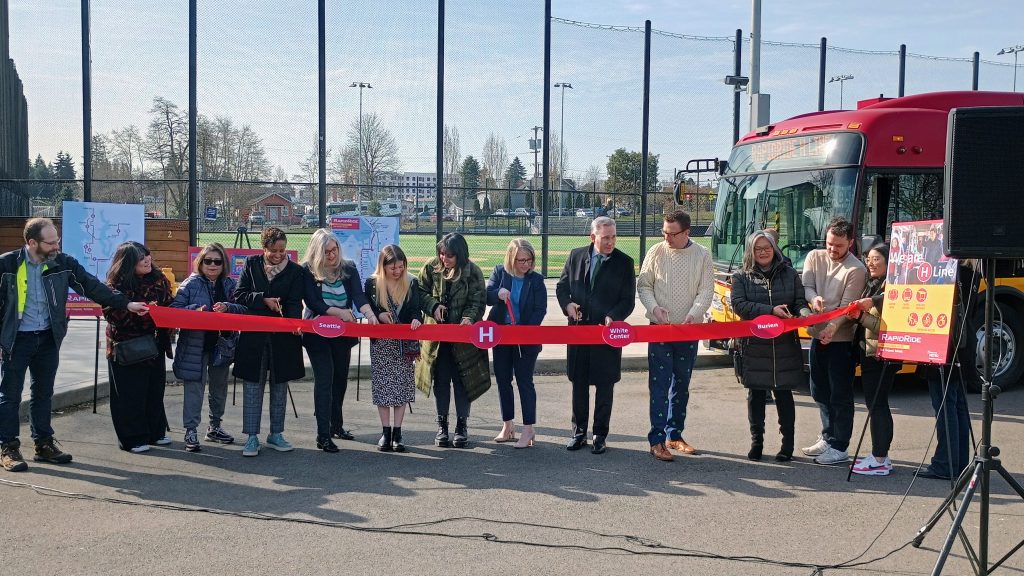
What You Need to Know Tomorrow
Riders looking to grab the first H Line will need to be at Burien Transit Center bright and early for the 5:26am trip headed toward Downtown Seattle. The first trip leaving downtown leaves at 6am sharp from 3rd Avenue and Virginia Street.
Along the former 120 route, look for off-board ORCA readers allowing all-door boarding like on other RapidRide routes, e-ink screens showing arrival times, and brand new shelters. Transit-signal priority will allow buses to bypass general traffic in their bus-only lanes.
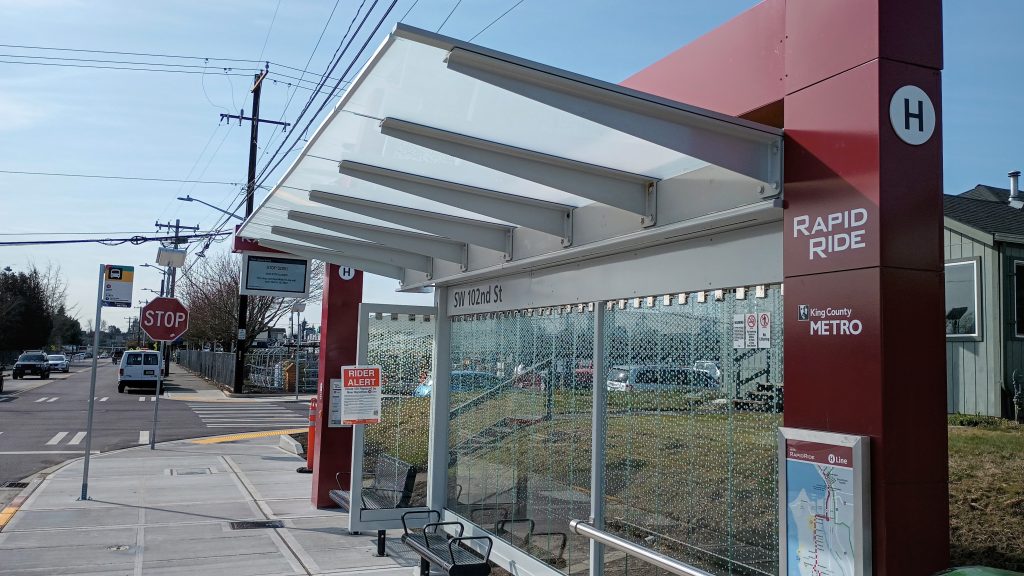
With the H Line connecting to the F Line at Burien Transit Center, it will now be possible to travel almost the entirety of the RapidRide network without using another bus to connect RapidRide routes, with the exception of the RapidRide B line on the Eastside.
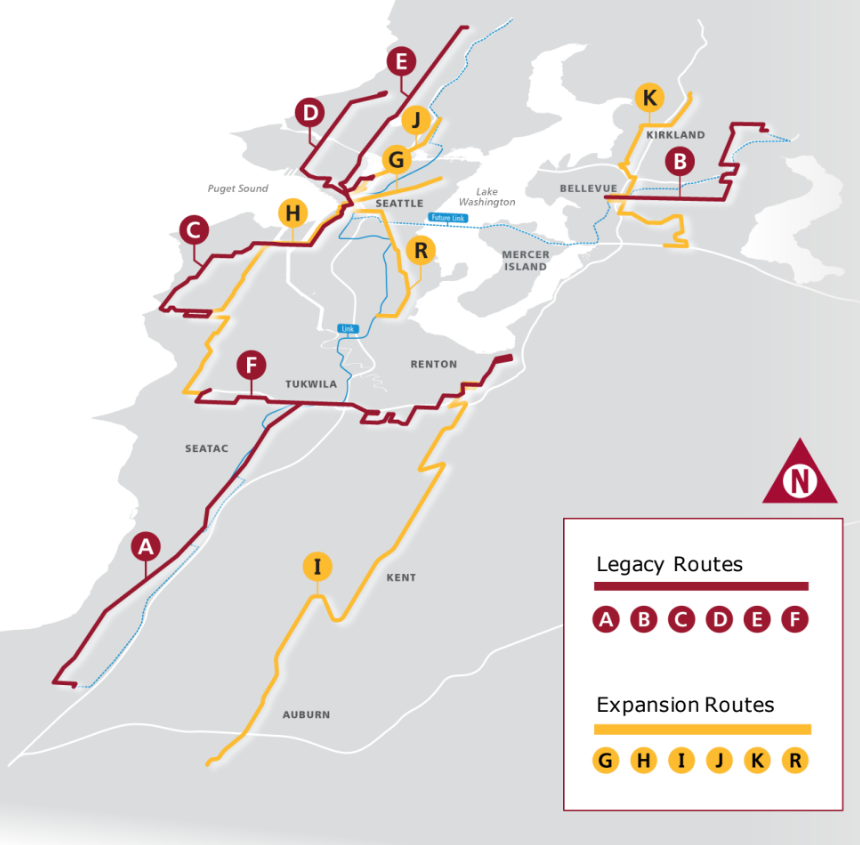
How We Got Here
The H Line is the first new RapidRide to open after Seattle’s 2015 transportation levy. That Move Seattle Levy, promised voters a full slate of seven expanded RapidRide lines by the time the levy expired in 2024. That list of seven was ultimately scaled back to just three, with the remaining four routes only set to get some upgrades as “transit-plus” lines, ostensibly due to a lack of federal aid during the Trump administration, but also because no local officials moved to top up budgets. Originally set to be delivered by 2020, the H Line was a victim of delays at both the City of Seattle and King County, with the pandemic layering additional delays on top of that.
While that three-year delay was significant, the RapidRide G Line on Madison Street actually fared worse. After originally being slated for 2019, it is now set for fall 2024. That’s why Metro is out of alphabetical order, with the H opening before the G.
The City of Seattle contributed $72.3 million toward the corridor upgrades deemed necessary to complete the project, most of which was spent on a full repaving of Delridge Way SW. Of that, $9.5 million from the Move Seattle levy itself was spent on the actual transit elements, out of a total cost of $33.8 million, the rest of which was funded by King County and a state transit grant.
The Delridge RapidRide line was considered to be the “first real test” of Seattle’s beefed-up Complete Streets ordinance, approved in 2019. The new law stipulated that “a protected bicycle lane with adequate directionality shall be installed along” any segment of street undergoing a major repaving project. It did not pass with flying colors. The route only features a southbound bike lane on a portion of the corridor, with retained parking and a lack of remaining space to fit facilities blamed for the shortcomings.
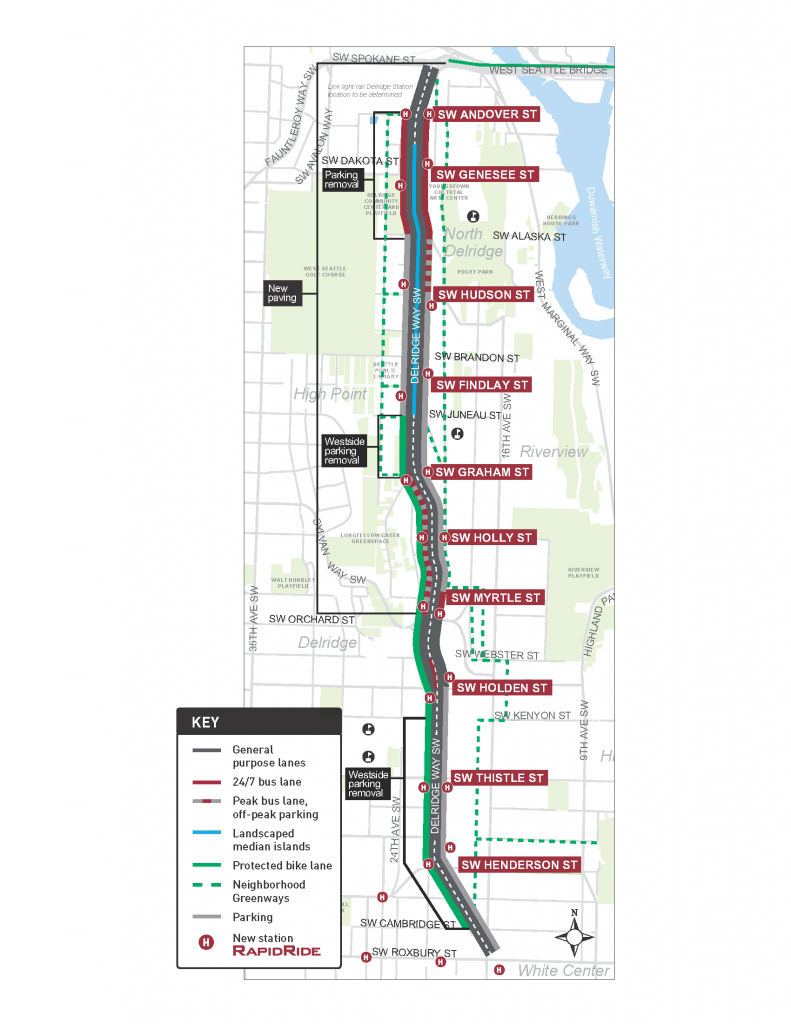
A major priority for the City of Seattle on Delridge Way was the addition of a center median that will provide a place for more than 150 trees in a neighborhood where the tree canopy is not as dense as some of the more affluent areas of the city.
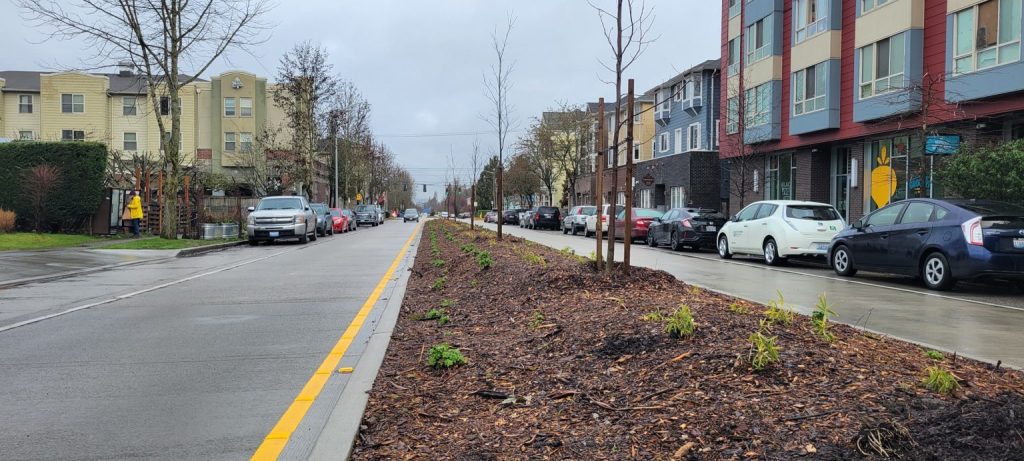
What Comes Next
The launch of the H Line will kick off a small flurry of RapidRide openings, with the RapidRide G following in 2024, the RapidRide I line between Renton and Auburn in 2026, and the RapidRide J to U District Station in 2026 or 2027.

After that, it’s anyone’s guess as the RapidRide K, between Kirkland and Bellevue, and the RapidRide R, to the Rainier Valley, languishing in planning with any likely opening dates pegged at the 2030s. King County Metro recently restarted planning for these two routes, with King County Councilmember Claudia Balducci pushing the county to pursue federal funding for the K Line. But in Seattle, it’s not clear how much traction the push to upgrade the R Line will have, with many Rainier Valley residents reluctant to go along with stop consolidation and most of the Seattle City Council simply out to lunch when it comes to regional transit discussions.
The agency’s long-range Metro Connects plan envisions 26 lines around the county, one for every letter of the alphabet, by 2050. But to get there, it’s going to take some substantial planning by county leaders and local city electeds from around King County.
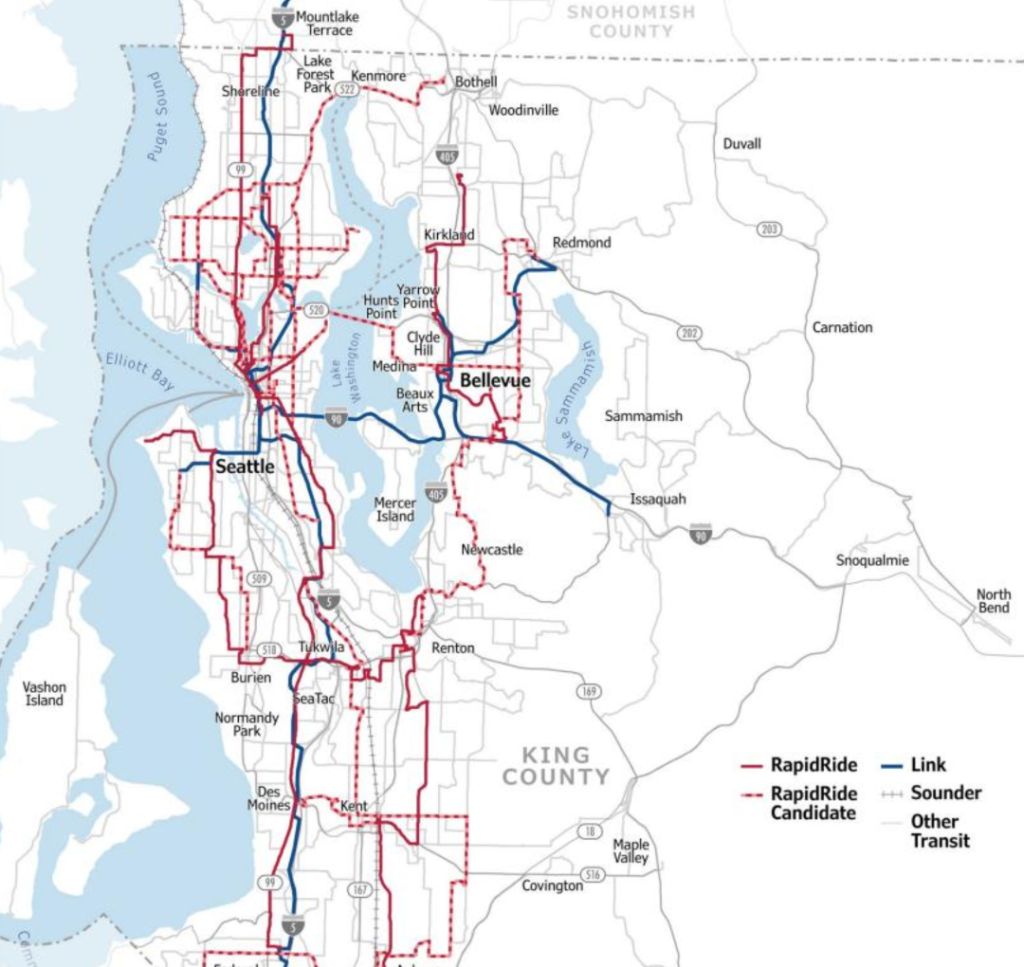
Against a backdrop of King County Metro’s struggles to return to anything approaching pre-pandemic ridership numbers, the H Line’s launch is a big deal. The badly needed upgrade demonstrates the lengths that the agency is going to provide frequency and reliability improvements to riders, even as resources are stretched thin as it continues to struggle to hire more bus operators. The switch from the 120 to the H Line may seem like a small one, but it’s actually a huge step toward recovering some momentum.
Ryan Packer has been writing for The Urbanist since 2015, and currently reports full-time as Contributing Editor. Their beats are transportation, land use, public space, traffic safety, and obscure community meetings. Packer has also reported for other regional outlets including BikePortland, Seattle Met, and PubliCola. They live in the Capitol Hill neighborhood of Seattle.

